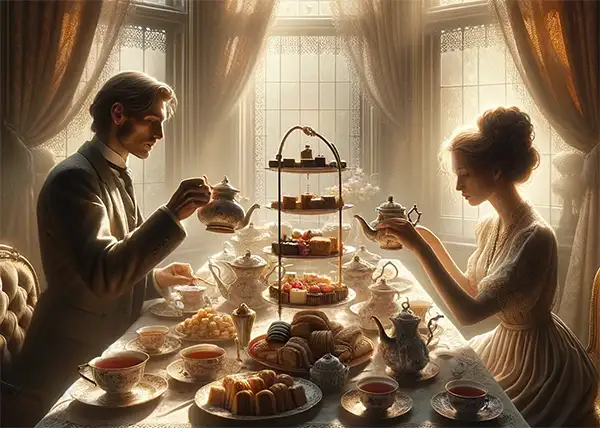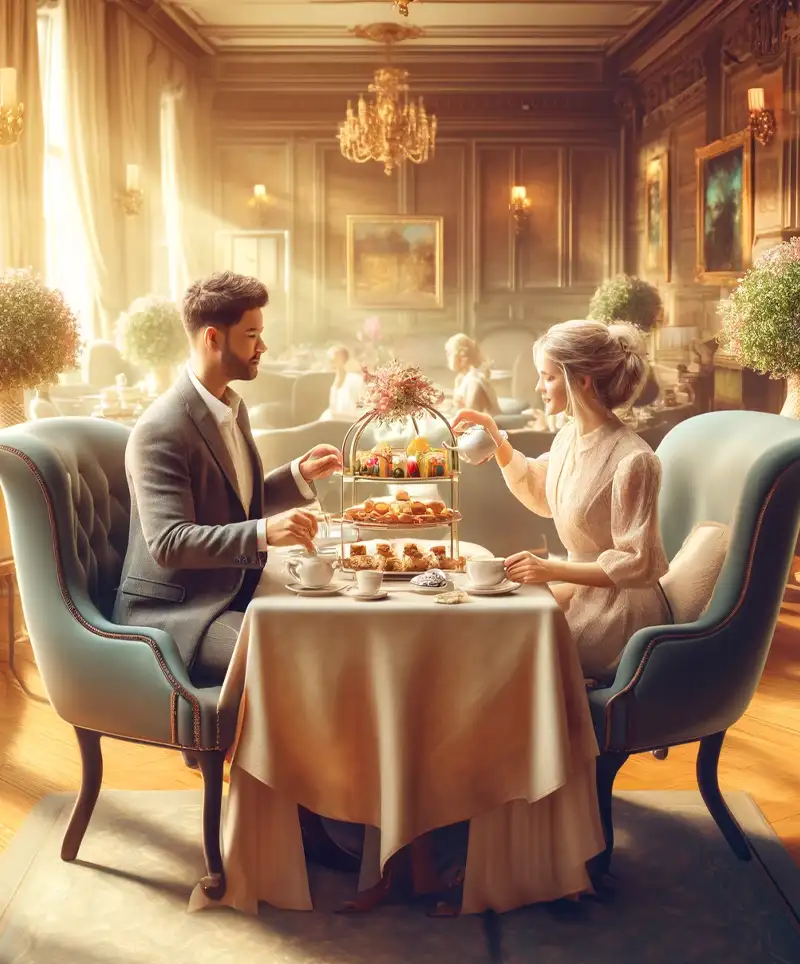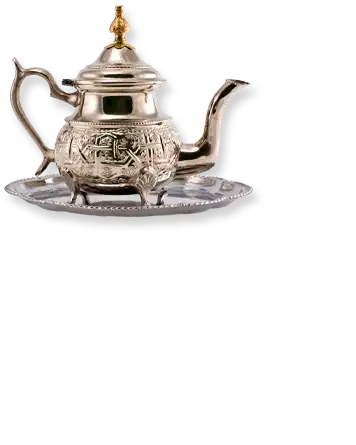Pinkies Up, World!
National Afternoon Tea Month nods to the grand tradition of pausing in the afternoon for a spot of tea—a practice steeped in history, refinement, and just the right amount of rebellion. It’s not merely about sipping something warm from a cup; it’s a celebration of crustless sandwiches, flaky scones, and a ritual that somehow makes eating cake in the middle of the day feel extremely dignified.
Once an upper-crust affair hidden behind velvet drapes and tight corsets, afternoon tea has become a global indulgence. This month-long celebration gives everyone—yes, even those who think all teas taste like "hot leaf water"—a chance to embrace the art of slowing down, steeping up, and snacking like aristocracy.
The Origins
Our tale begins in the mid-19th century with Anna, the 7th Duchess of Bedford, a woman of refined taste and zero tolerance for hunger pangs. In an era where meals happened at breakfast and then not again until dinner (an unthinkable lifestyle by modern snack standards), Anna found herself wilting by mid-afternoon.
Her brilliant solution? A sneaky little setup of tea and light bites in her private quarters. The result? Hangriness avoided, vibes restored. Word got out, and soon, Anna’s friends were joining her for what would become the poshest snack time in history. What started as a solo hunger rescue mission evolved into a fashionably late-day social ritual that swept through British high society faster than you can say “Darjeeling.”
Imagine it: the Victorian version of going viral—except instead of TikTok dances, it was silver teapots, lace gloves, and cucumber sandwiches. Afternoon tea soon crossed the class divide, finding its way into hotels, homes, and eventually global pop culture, from cozy cafés to lavish bridal showers.
 Anatomy of a Proper Tea Spread
Anatomy of a Proper Tea Spread
Afternoon tea isn’t just a meal—it’s a curated experience. A symphony of tiny, beautiful bites served in ascending levels of fanciness (usually on a tiered tray, which science has proven makes everything taste better).
Here’s what you must include if you want to do it right (or at least convincingly):
- Tea: Obviously. Black teas like Earl Grey or Assam are classics, but green teas, herbal infusions, and fancy blends like “Berries of the Forest” also have their moment. Loose leaf earns bonus points, but we won’t judge your tea bags. (Okay, maybe a little.)
- Scones: The cornerstone of the operation. Served warm with clotted cream and jam. The great "cream or jam first?" debate is still unresolved—proceed with caution and maybe don’t bring it up at family gatherings.
- Sandwiches: Not your average ham-and-cheese. Think dainty rectangles with fillings like egg and cress, smoked salmon, or cucumber. Crustless, of course—this isn’t a lunchbox situation.
- Pastries: Tiny tarts, bite-sized cakes, and things so pretty you hesitate to eat them. (Briefly. Then you eat them. With gusto.)
Optional additions include lemon curd, macarons, and pretending you understand the difference between oolong and pu-erh.
The Celebration: How to Embrace Afternoon Tea Month
You don’t need royal lineage or a personal butler named Giles to get into the spirit of National Afternoon Tea Month. Here are some deliciously fun ways to join in:
Host Your Own Tea Party
Whether it’s an elaborate affair with antique china or a paper plate picnic in your backyard, the goal is good company, good snacks, and an excuse to wear something with lace.
Explore Local Teahouses
Support a small business and discover their take on the tradition. Some go traditional, others offer wild modern twists—like boba afternoon tea or avocado toast on the top tier (we don’t judge innovation).
Take a Tea Tasting Tour (Without Leaving Home)
Try teas from around the world—Japanese matcha, Moroccan mint, Indian masala chai. Create a rating system with categories like “Aroma,” “Flavor,” and “Would I drink this while judging strangers in a fancy hat?”
Learn the History of Tea
Did you know wars were fought over tea? That’s right—your cuppa comes with a backstory involving trade empires, smuggling, and tax revolts. Suddenly, that sleepy chamomile feels thrilling.
Get Crafty with Tea DIYs
Make your own blends, try tea-stained art projects, or even whip up tea-scented bath salts. If you're going to lounge with a biscuit, you might as well smell like bergamot.
Quirky Afternoon Tea Facts (Because Why Not?)
ou might think afternoon tea is all doilies and daintiness, but behind those sugar cubes and polite sips lies a world of strange customs, historical twists, and surprising trivia. Whether you're a seasoned tea aficionado or just here for the scones, these fun facts will add a splash of curiosity to your cuppa—and might even make you the most interesting guest at your next tea party.
- “Afternoon Tea” and “High Tea” are not the same thing. One is dainty and served at low tables (afternoon tea). The other was historically the working class’s hearty post-shift meal—served at a "high" dinner table. Confuse the two, and somewhere, a British person gasps.
- Queen Victoria helped popularize the concept of tea with cakes. If you’ve ever felt the urge to have a second scone, you can blame it on her sweet tooth.
- The world’s most expensive afternoon tea includes champagne, white truffle croquettes, and caviar—and will set you back over $600 per person. (But hey, it comes with Instagram clout.)
- Clotted cream is neither clothed nor dangerous. It just has a very unfortunate name. It’s thick, rich, and absolutely necessary on your scone. Trust us.
National Afternoon Tea Month isn’t just a polite nod to British tradition—it’s a delightful excuse to hit pause, pour something warm, and indulge in the kind of snacks that make you feel both elegant and slightly overfed. Whether you're in it for the food, the flair, or the fantasy of living in a Jane Austen novel, there’s never been a better time to embrace your inner tea aristocrat.
So pinkies up, friends. And if you accidentally eat five scones in a row, just call it cultural appreciation.
Please Share our Content






 Anatomy of a Proper Tea Spread
Anatomy of a Proper Tea Spread








 "Sláinte!" is a traditional Irish expression used as a toast, equivalent to "Cheers!" in English.
"Sláinte!" is a traditional Irish expression used as a toast, equivalent to "Cheers!" in English.